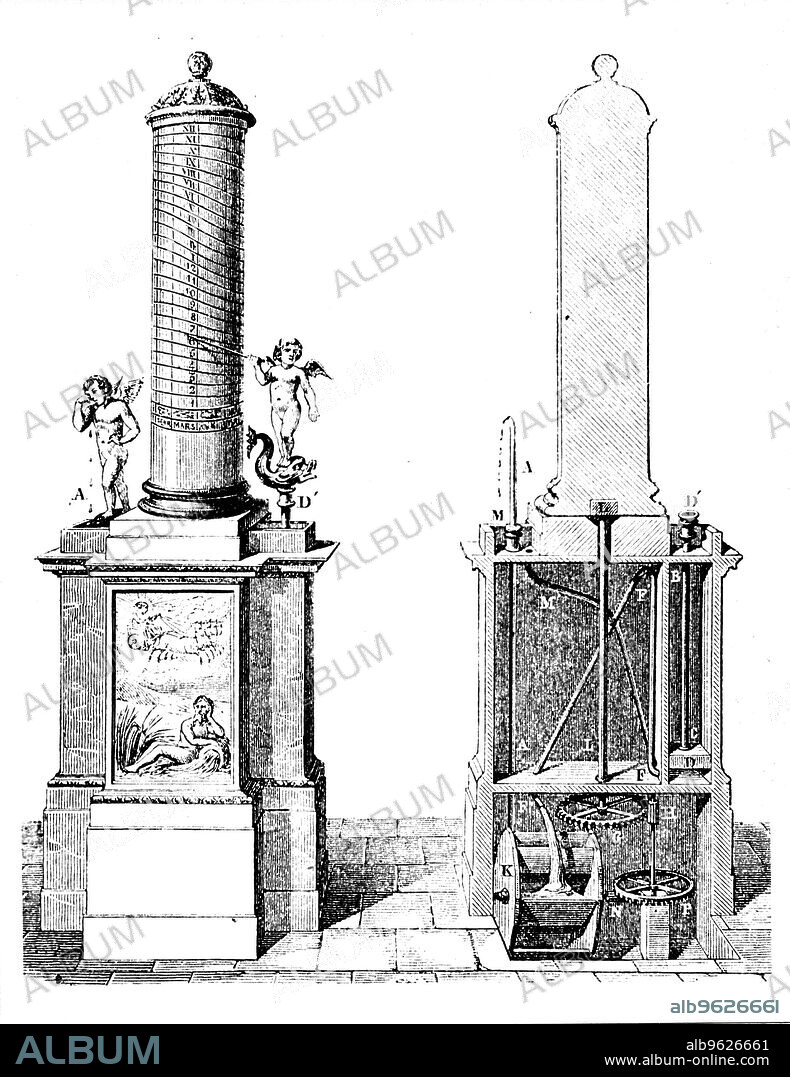alb9626661
Reconstruction of a clepsydra (water clock), invented by Ctesibius of Alexandria, c270 BC (1857). Artist: Unknown

|
Añadir a otro lightbox |
|
Añadir a otro lightbox |



¿Ya tienes cuenta? Iniciar sesión
¿No tienes cuenta? Regístrate
Compra esta imagen

Título:
Reconstruction of a clepsydra (water clock), invented by Ctesibius of Alexandria, c270 BC (1857). Artist: Unknown
Descripción:
Ver traducción automática
Reconstruction of a clepsydra (water clock), invented by Ctesibius of Alexandria, c270 BC (1857). Ctesibius (fl270 BC) was an inventor and mathematician who initiated a tradition of great engineers in ancient Alexandria. None of his writings have survived, and his inventions are only known about from references to them made by others. This clock worked by water dripping at a constant rate and raising a float with a pointer. It was only superseded in terms of the accuracy of its timekeeping in the 17th century when Christiaan Huyghens showed how the pendulum could be applied to clocks
Técnica/material:
engraving
Crédito:
Album / Ann Ronan Picture Library/Heritage-Images
Autorizaciones:
Modelo: No - Propiedad: No
¿Preguntas relacionadas con los derechos?
¿Preguntas relacionadas con los derechos?
Tamaño imagen:
2841 x 3684 px | 29.9 MB
Tamaño impresión:
24.1 x 31.2 cm | 9.5 x 12.3 in (300 dpi)
Palabras clave:
3RD CENTURY B. C. • ANCIENT GREEK • ANTIGUA GRECIA • BLANCO Y NEGRO • CIENCIA • CIUDAD ANTIGUA • CIUDAD • CONCEPTO • CORTE TRANSVERSAL • CRONOMETRO • DISEÑO • EGIPCIO • EGIPTO • GRABADO • GRECIA ANTIGUA • GRECIA • GRIEGO ANTIGUO • GRIEGO • INGENIERÍA • INNOVACIÓN • INVENCION • MAQUINA • MAQUINARIA • MONOCHROME • MONOCROMO • PAÍS • RELOJ AGUA • RELOJ DE AGUA • RELOJ • S. III AC • SIGLO III A. C. • SIGLO III AC • SIGLO XIX • SIGLO • TECNOLOGÍA
 Pinterest
Pinterest Twitter
Twitter Facebook
Facebook Copiar enlace
Copiar enlace Email
Email
